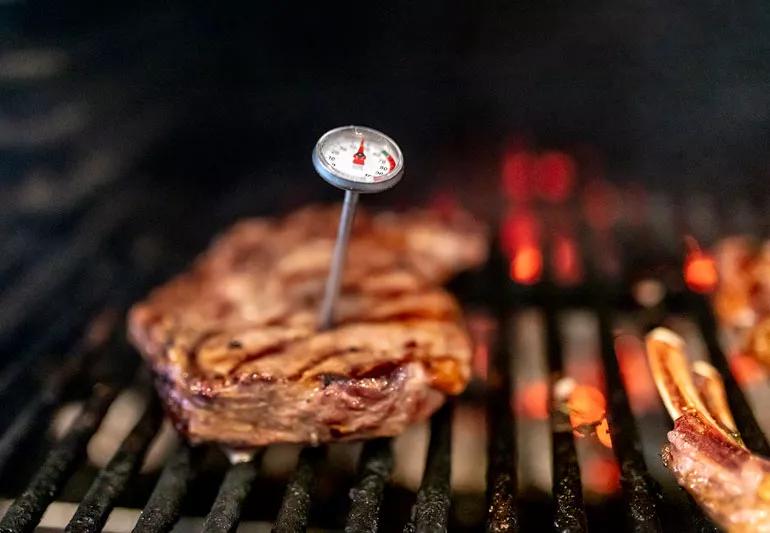A guide to cooking or ordering in a restaurant

Some people prefer their meat on the rare side. “As a registered dietitian, I want my patients to be aware that tasting or eating undercooked meat can cause food poisoning. It’s important to understand what ‘undercooked’ really means as it applies to different meats and cuts,” says dietitian Laura Jeffers, MEd, RD, LD.
Advertisement
Cleveland Clinic is a non-profit academic medical center. Advertising on our site helps support our mission. We do not endorse non-Cleveland Clinic products or services. Policy
Meat may contain poisonous bacteria or parasites (e.g., E. coli, salmonella, Staphylococcus aureus, Yersinia enterocolitica, Listeria, trichinosis). These bacteria or parasites can cause flu-like symptoms such as nausea and vomiting, abdominal cramping, diarrhea, fever and chills. The symptoms can be very painful and sometimes last for several days.
Here are some tips to avoid foodborne illness. Keep in mind, these are minimum temperature requirements, so it’s OK to cook your meat a little longer if you prefer it more well done.
Unfortunately, you can’t tell whether meat is safely cooked just by looking at it. Any cooked, uncured red meats – including pork – can be pink, even when the meat has reached a safe internal temperature. A safely cooked hamburger patty may look brown, pink or some variation of brown or pink.
Advertisement
The only fail-safe method for determining whether or not meat is done is to check its internal temperature using a meat thermometer. Of course, this isn’t practical in a restaurant. Restaurants do use varying guidelines to determine what temperatures constitute rare, medium rare, medium, etc. But in most instances, if you order steaks to be cooked at least to medium and burgers to well done, you should meet the minimum temperature requirements.
Turns out, undercooked meat isn’t the only hazard. Meats cooked at a very high temperature can also cause problems.
Researchers have found that high consumption of well-done, fried or barbecued meats is associated with an increased risk of colorectal, pancreatic or prostate cancer.
When beef, pork, fish or poultry is cooked using high-temperature methods, such as pan frying or grilling directly over an open flame, they form chemicals known as heterocyclic amines (HCAs) and polycyclic aromatic hydrocarbons (PAHs). HCAs and PAHs cause changes in DNA that may increase your risk for cancer.
Meats cooked at high temperatures, especially above 300 degrees Fahrenheit (as in grilling or pan frying), or that are cooked for a long time tend to form more HCAs. For example, well done, grilled or barbecued chicken and steak all have high concentrations of HCAs. Cooking methods that expose meat to smoke or charring contribute to PAH formation.
According to the National Cancer Institute, there are several methods for reducing your risk of exposure to HCAs/PAHs, including:
When it comes to cooking or ordering meat in a restaurant, keep these tips in mind to lower the risk of foodborne illness or exposure to HCAs.
Advertisement
Learn more about our editorial process.
Advertisement

Leftovers can be kept in the fridge for three to four days or frozen for three to four months

Ultimately, rice is safe to eat, but the type, where it’s grown and how you cook it may be factors to consider

Washing your hands, thoroughly cleaning kitchen tools and preparing meat separately can reduce the risk of foodborne illness

Extended outages lasting more than four hours can make food in your fridge unsafe to eat

Microwaves use non-ionizing radiation and haven’t been shown to cause cancer — follow food safety practices and use microwave-safe containers

Once perishable food hits the table, it’s typically good for about two hours

Color, texture, smell and expiration date all hold important clues

No! Be sure to put your leftovers in the fridge

Start having sex about 72 hours before ovulation, then at least every other day during your fertile window

Attachment theory suggests that your earliest relationships shape connections throughout your life

It isn’t a recognized mental health disorder, but research shows that problematic social media use can negatively affect your mental health, self-esteem and sleep